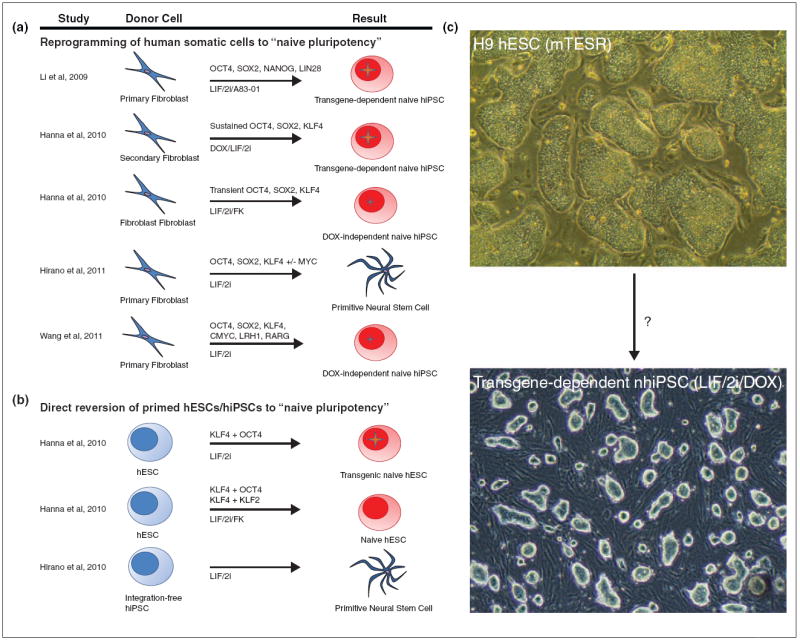Figure 2.

Attempts to generate naïve human pluripotent stem cells through direct reprogramming or reversion of hESCs/hiPSCs. Several groups have attempted to access the naïve human pluripotent state through (a) direct reprogramming of primary somatic cells or secondary fibroblasts, (b) reversion of conventional ‘primed’ human ESCs, iPSCs, or ‘secondary’ human iPSCs. (a) Direct reprogramming of human cells using constitutive lentiviruses, inducible lentiviruses, retroviruses, or Piggybac Transposon has given rise to transgene-dependent naïve human iPS cells, transgene-independent naïve human iPS cells and primitive neural stem cells. (b) Reversion of conventional human ESCs/iPSCs by stable or transfection of OCT4, KLF2, KLF4 and transfer into LIF/2i or LIF/2i/FK yields transgene-dependent or transgene-independent naïve human iPSCs; transfer and selection of integrationfree human iPS cells in LIF/2i yields primitive neural stem cells. (c) Can primed hESCs be converted directly into a stable naïve pluripotent state? Primed human ESC line H9 cultured in mTESR medium (top) and transgene-dependent naïve human iPS cell line cultured in LIF/2i/DOX conditions. The transgene-dependent nhiPSC line is dependent on continuous induction of a transgene-cassette encoding the four factors OCT4, SOX2, KLF4, and CMYC and was generated from the BJ fibroblast cell line. 2i = MEK inhibitor PD0325901 and GSK3-beta inhibitor CHIR99021. FK = Forskolin. rtTA = reverse tetracycline transactivator. Large star indicates self-renewal is sustained by high levels of transgenes. Small star indicates the presence of residual transgenes.
